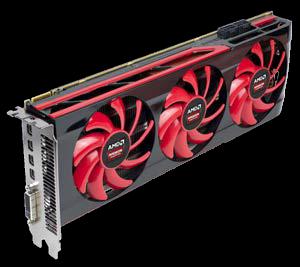Bundled with well-known games to attract its target market.

By Jon Peddie
Just to make sure you have the latest games that can exploit their newest graphics add-in board (AIB), AMD is offering a bundle program, “Never Settle: Reloaded.” People who buy a new HD7990 will also get Crysis 3, Bioshock Infinite, Tomb Raider, and four other titles. AMD is also including the anticipated Far Cry 3: Blood Dragon by Ubisoft. This new title will also be offered as a thank-you gift to all previous “Never Settle: Reloaded” customers and will be loaded automatically onto existing redemption codes. So AMD is offering one-stop shopping— buy the AIB, get the games.
The HD 7990 combines two GPUs and can deliver 8.2 (peak) TFLOPS single precision, and 2 TFLOPS (peak) double) precision. AMD claims they can run Tomb Raider with their new TressFX Hair technology enabled, or Crysis3 in 4K resolution. However, remember: 4K monitors are currently limited to 30 fps. The HD 7990 comes with 6 GB GDDR5, so it has the memory to double or even triple buffer a 4K display. The HD7990 supports 4K through its DisplayPort ports, and they in turn can generate an HDMI via a dongle cable.
The board will drive up to five monitors using its Eyefinity technology. We thought that to be odd, seeing that almost any high-end AMD GPU can support six. We asked Devon Nekechuk at AMD about it: should we assume the DVI is dual link and represents two outs (bringing the total up to six, where it logically should be)?
Nekechuk said, “From the PHY perspective, that is correct. We have three split-able TMDP pairs, and we drive the Dual Link DVI from one of those, and split the other two to drive the four mini DisplayPorts.
“However, this is not the reason we chose this specific display output,” Nekechuk said. “Eyefinity-5 is the ultimate gaming set up, while Eyefinity-6 is good for digital signage or information display. The reason for this has to do with display bezels and the center of focus. For Eyefinity-5 set-ups, the center of focus is in the center of the middle screen, while on Eyefinity-6 set-ups, your center of focus falls right onto a bezel. As such, Eyefinity-5 is the target ‘hero’ configuration for these high-end gaming SKUs.” Makes sense.
It took 8.6 billion 28-nm transistors to build the GPUs, and when they were finished, they had 4,096 stream processors to show for their efforts.
The two GPUs have 48 lanes of PCI Express 3.0, which can provide them with 96 GB of inter-GPU bandwidth for AMD’s CrossFire.
We haven’t gotten a board yet, and we’re really looking forward to putting it through its paces—we don’t except to be disappointed. The board, with its eight titles, will sell for $999. Not inexpensive, but Nvidia showed with the Titan that there’s a healthy demand for such state-of-the-art AIBs.
Our take
AMD has managed through all the re-orgs, attrition, new hires, and losses to keep the GPU group grinding away. That’s a credit to the team and its boss, Matt Skynner. He’ll be getting some needed help with the return of Raja Koduri. The design wins at Sony, Nintendo, and Microsoft don’t hurt either.





